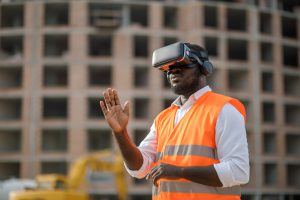
Virtual reality headsets were best-sellers during the winter holidays. The technology uses a heads-up display (HUD) that allows its wearers to interact with a simulated environment. The experience itself is called a first-person view (FPV).
The best VR headset experiences are the ones in which you forget you’re wearing a headset.
VR is now being used by many industries for many reasons; from onboarding to evaluations. VR offers insights and retention properties that are greater than traditional methods. VR is valuable for:
- Advanced skills education
- Compliance training
- Emotional evaluation
- Claustrophobia
- Fear of heights
- Motion sickness
- Equipment location/identification
- Facility/working environment familiarization
- Hazard identification
- Inspection procedures
- Maintenance processes
- New employee onboarding
- Safety processes/practices
- Skills/environment screening
- Standard operating procedures
Traditional training often requires trainees to be put into situations – sometimes dangerous – without knowing how they will react. Passive classroom training methods are less effective and real-world field training may pose injury risks.
“Employees can complete VR training four times faster than in-person training and 1.5 times faster than e-learning training,” says Oberon Technologies CEO Vi Kellersohn. “Employees also retain knowledge of what they learned at a rate of up to 80% one year after the training, compared to 20% just one week after traditional training.”
Construction companies find VR can cause very-real emotional reactions. Hazardous fall trainees can feel the fall. That may be all that’s needed to reinforce the added safety of PPE (personal protective equipment).
The benefits of legacy training are also real as longtime processes and practices are retained and re-shared. You’ll reduce instructor-led training expenses and may see lower equipment misuse.
Benefits of using VR can include:
- Company-specific knowledge transfer
- Distraction preventiveness during training
- Hazardous scenario simulation
- Locational-specific awareness
- Playback/analytics
- Pre-worksite proficiency reinforcement
- Unlimited use
With limited employee resources and talent retention challenges, construction companies are investing more in onboarding and training than ever before. They say the investment can pay itself.
One investment that can more than pay for itself is Construction Monitor data delivery. We take millions of building permits and extract only what will work for your construction-industry company. We’re the leading U.S. provider of real-time permit data. And the reality is, you can use our business-building information to increase profits.
